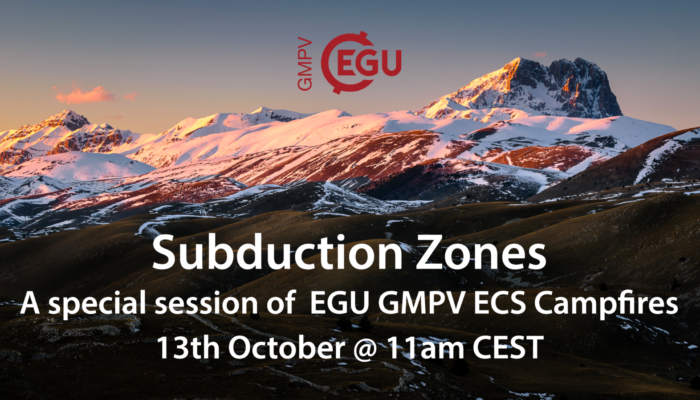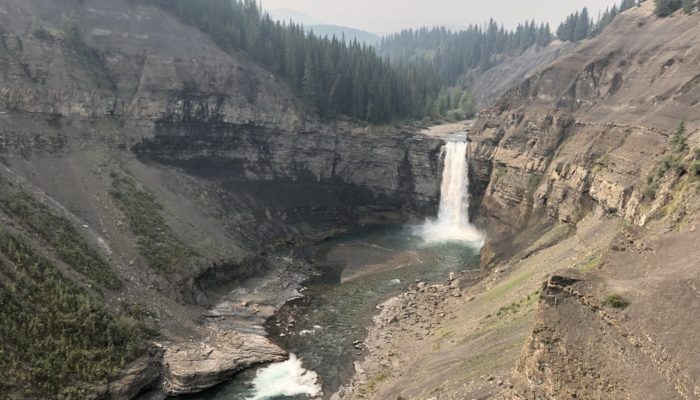The 13th edition of the Geochemistry, Mineralogy, Petrology and Volcanology division’s early career scientists Campfires will be a special edition on Subduction Zones! The talks will be held on Wednesday 13th October at 11am CEST on Zoom. Our three ECS speakers are: 1. Lorraine Tual (Twitter: @_garnetite_) Post-Doc @ the University of British Columbia, Canada Title: Lu-Hf dating of laser-milled ga ...[Read More]
If you didn't find what you was looking for try searching again.
Geodynamics
The Sassy Scientist – It’s All In The Mix
Mare needs to secure some funding. Trotting through previous successful applications, she finds a common denominator. As a purebred scientist, she bellows: How important is interdisciplinary research for a research proposal? Dear Mare, Very important. Realistically, you’ll not get funded in case you’re a one-trick pony. Who will hand over their pouch of gold nuggets to someone who will ...[Read More]
Cryospheric Sciences
Let’s go to School of Sustainability!
Next generations will not only see impacts of climate change first-hand, but they will also deal with the associated societal implications. Implementing climate solutions and orienting themselves in a growing, green job market need cutting-edge knowledge, which is often hard to get through the ordinary, high-school syllabus. As early-career cryo-scientists (Federica is a PhD student in glacial geo ...[Read More]
Stratigraphy, Sedimentology and Palaeontology
Alberta’s Geological Riches
Smoky Summer It has been a difficult summer in Alberta, with smoke from forest fires in British Columbia blanketing much of the southern part of the Province. However, this has not stopped me getting out into the field on a variety of projects and hikes, including a virtual field trip looking at the Cardium Formation and several in person trips to the beautiful Sheep River Provincial Park and surr ...[Read More]
Geodynamics
Curious case of convex upwards topography in accretionary wedges
Accretionary prisms are wedge-shaped bodies of crustal rocks that are commonly known to have formed by accommodating the component of convergence along subduction margins. These prisms, primarily wedge shaped with lateral variations in topographic height from hinterland to foreland are commonly characterised by a gentle and uniform slope towards the frontal margin (for instance, the Himalayan fold ...[Read More]
Natural Hazards
The road to successful scientific writing for early-career scientists
The world of research is highly competitive, and early career scientists face many challenges while trying to carve out a successful career path. Writing scientific articles is one of those challenges. Prof. Paolo Tarolli (University of Padova) shared his personal experience on “How to write a scientific article” with 130 attendees last 7th September, during the first Campfire event, & ...[Read More]
Tectonics and Structural Geology
TS Must-Read – England and Molnar (1990) Surface uplift, uplift of rocks, and exhumation of rocks
With this paper, England and Molnar (1990) shed light on the recurrent confusion in the uses of terms ‘uplift’ and ‘exhumation’. The main focus is to clarify the difference between surface uplift, uplift of rocks, and exhumation by explaining the differences and the relations between these processes (Fig. 1). The manuscript also illustrates how other processes, such as changes in climate, can be m ...[Read More]
GeoLog
GeoTalk: Meet Mengze Li, atmospheric chemist and the Atmospheric Sciences Division’s Early Career Scientist Representative
Hi Mengze, thank you for spending your time with us today. Could you tell our readers a little about yourself? Hi Simon, thanks for the interview today. I’m happy to tell more about myself. I was born in China, lived and studied there until I finished my Bachelor’s study. After that I went to Germany for Master’s and doctoral degrees. Last year I have finished my PhD at Max Planck Institute for Ch ...[Read More]
Cryospheric Sciences
Will the Arctic be ice free earlier than previously thought?
There is no doubt that the Arctic is currently losing its sea ice as our climate is warming. And this process will carry on as temperatures continue climbing. But the rate at which sea ice will melt in the future and the exact date when the Arctic will be free of sea ice is not known due to several factors (which will be briefly discussed in this post). Torben Koenigk and I have selected climate m ...[Read More]
Geodynamics
The Sassy Scientist – Postdoc Purgatory
Postdoc appointments: the forgotten terrace of Purgatory. Where researchers are sentenced to linger till either a position opens in the Heaven of permanent contracts, or they realise that, after all, they are not interested anymore. This terrace is composed of different levels of various length. Nobody knows how many levels there are and how long they are, or should be. Raul asks: What is the idea ...[Read More]










